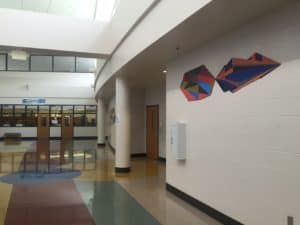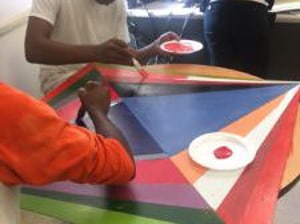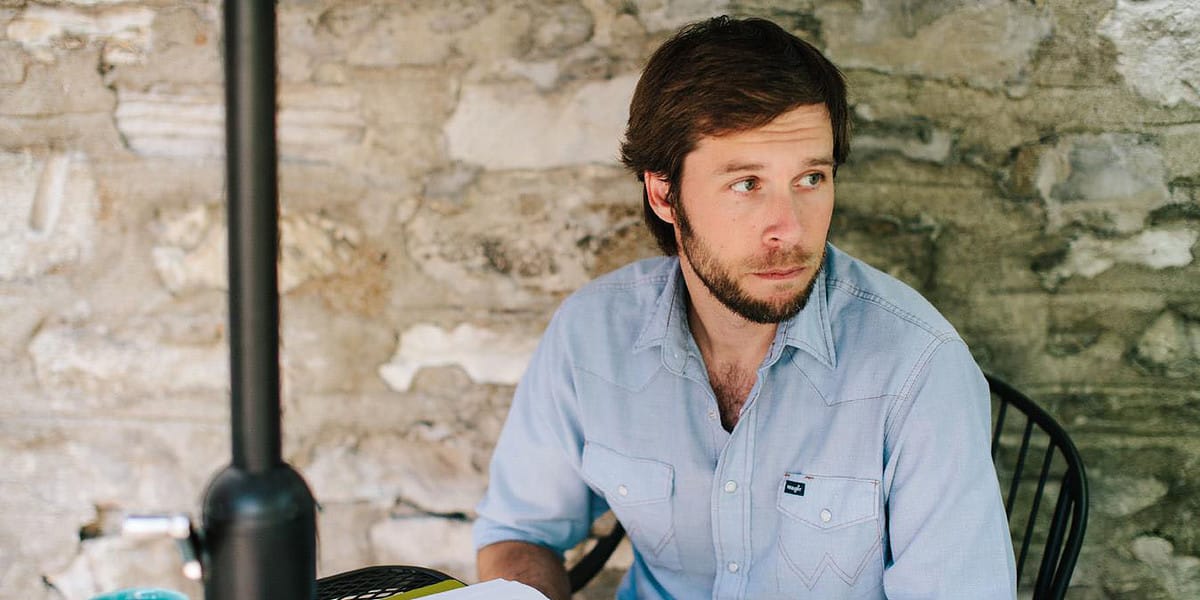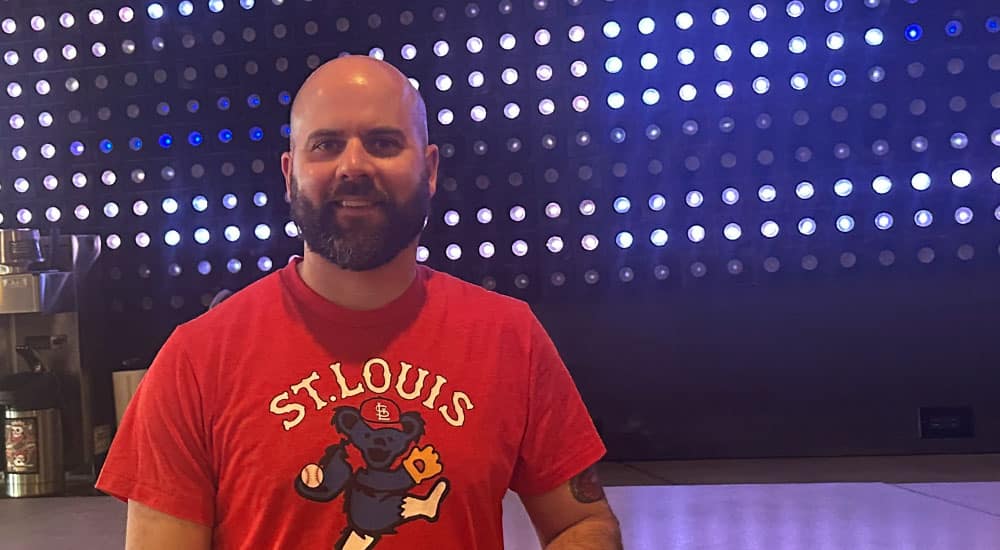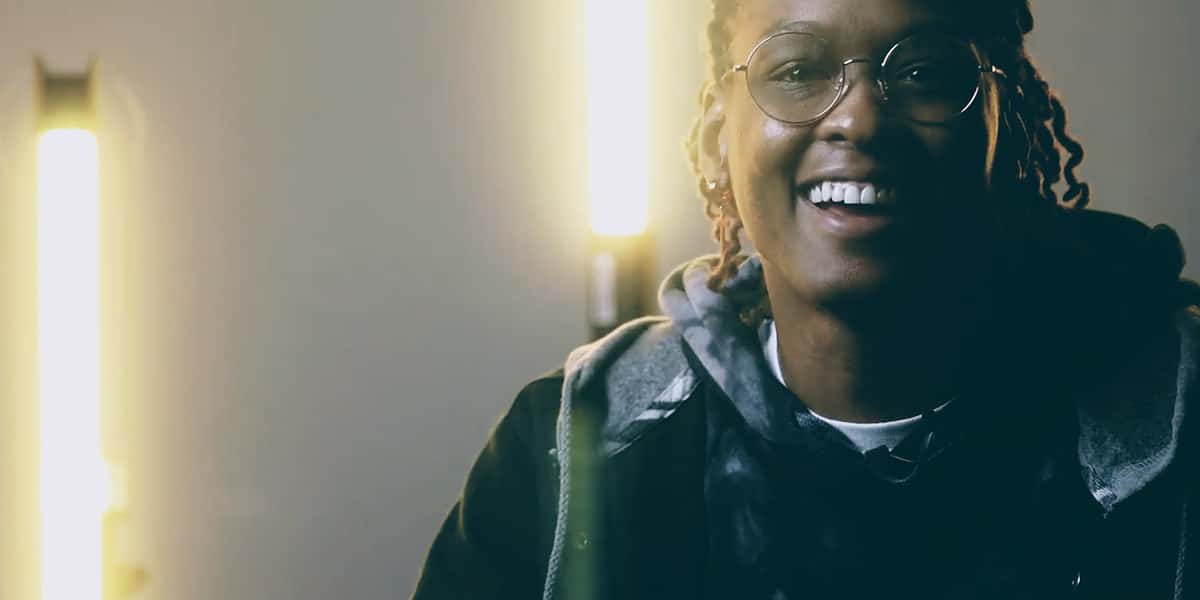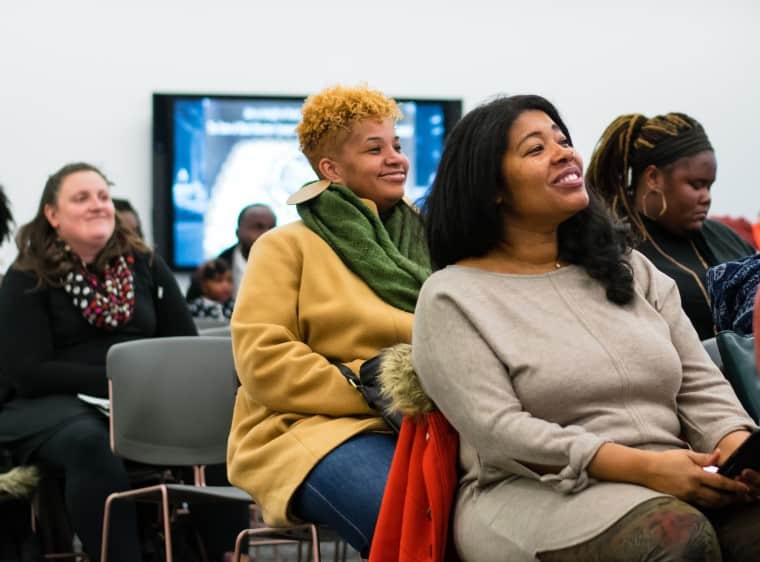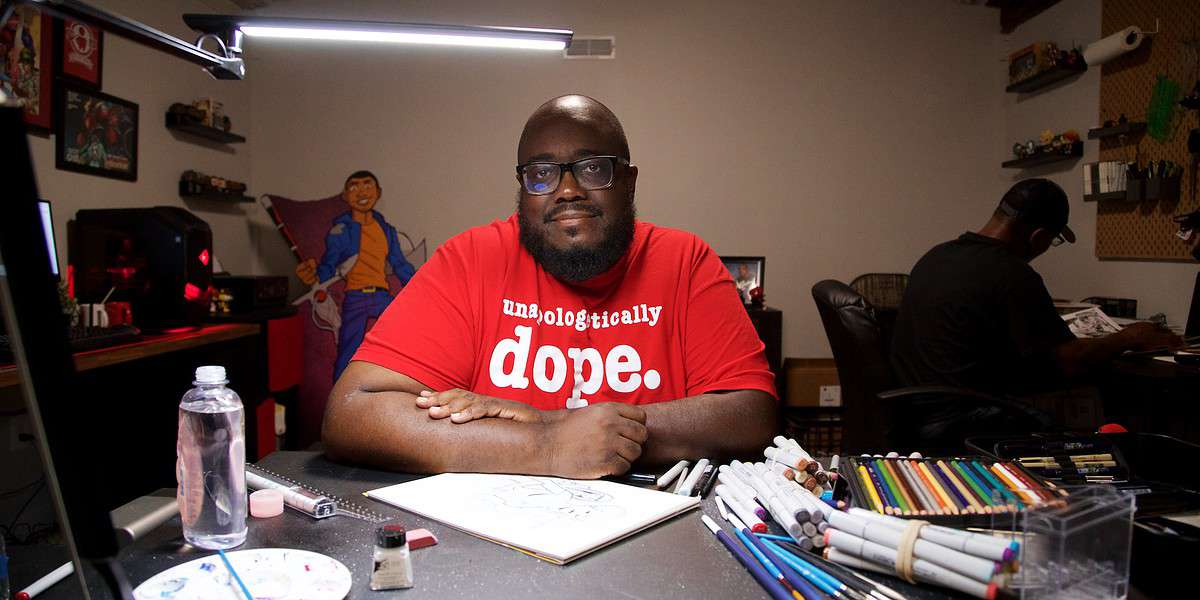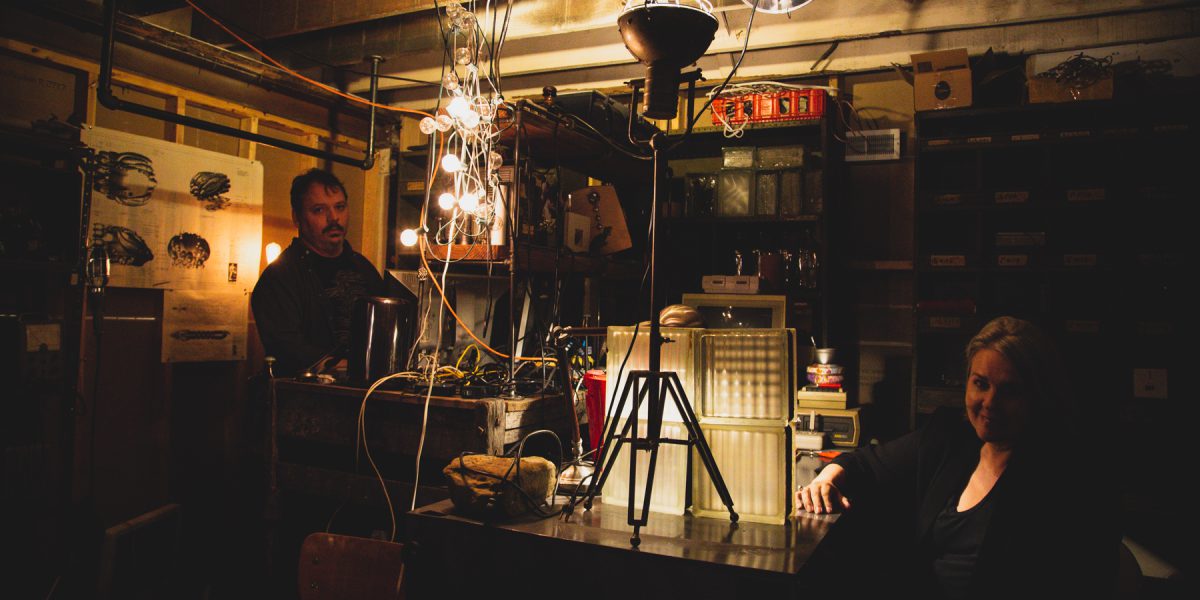These days, Ellie Balk splits time between St. Louis and New York City, finding work and inspiration in both locales.
“I built my career in New York and was there for 12 years,” she says. “Here, I’ve lived for almost two years; it’ll be two in October. The work is still coming in New York, which is where I established myself.” In New York, she was also running a non-profit which focused on taking school kids to work on striking public art projects in their communities, as well as raising funds for residencies for other artists to do similar work.
Moving to St. Louis, she wanted to to “continue my efforts, not only as an artist, but as an organizer.”
She says that she found Springboard here and “was interested in how they structured their organization. And I wound up as a program artist.”
Her work came through a program titled Visualizing Mathematics Through Perspective, which took place at Carnahan High School of the Future. She coordinated efforts with John Grapperhaus of Springboard, who works a multi-tiered job, including a role as the liaison between Springboard and the St. Louis Public School system, particularly relating to arts enrichment programs.
The pair, Balk says, included a “site a visit and we teamed up with a math teacher who teaches algebra and geometry.” Incorporating visual art, they “worked a lot with triangles and pulled in this idea of two-point perspectives. We talked about color and color theory.”
For Balk, the program, which mostly included 9th and 10th grade students, was solid, in that they were already working on art and mathematics. This program simply brought the two concepts together in a style that was engaging and lasting, in that the art works they were creating were meant to stay at the school, posted on walls.
Balk says that working through Springboard, which was begun in 1965, is “a totally different approach to the core curriculum. Art teachers are teaching important skills. I bring in a different experience, a visual language to help the academic curriculum. It’s an interesting niche that we’re working in.”
What’s left at the school – a series of bright, big pieces of art.
“It’s creating this works of art,” Balk says, “that hopefully will still be there in five years.”
Those visual reminders augment what the each student takes with them.
“I’m really passionate about this work,” Balk says. “And I really do believe in the impact that classes like this can have on students that are struggling. It gets students connected to good experiences in the classroom. They’re making friends and wanting to come to school.” She admits that those already excelling will just be given that much more motivation by such programs.”
